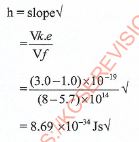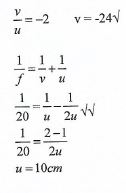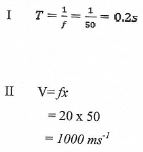QUESTIONS
SECTION A (25 marks)
Answer all the questions in this section in the spaces provided.
- Explain why the walls of a studio are padded with woollen materials.(2 marks)
- State one characteristic of soft X-rays that distinguish them from hard X-rays.(1 mark)
- Figure 1 shows a bar magnet AB suspended by a string.
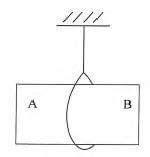
Figure 1
When the North pole of another magnet is brought close to end A, there is repulsion. State the polarity of end B.(1 mark) - State what happens to the image formed by a pin hole camera when the size of the hole is increased(1 mark)
- The angle of incident for a ray of light moving from air to a certain liquid is 30°. Given that the refractive index of the liquid is 1.36, determine the angle of refraction.(2 marks)
- An electric kettle is rated 1.8kW, 240 V. Determine the rating of the fuse that may be used in the kettle.(3 marks)
- Figure 2 shows the image of an object O placed on the principle axis of a convex mirror.
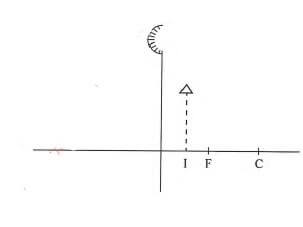
Figure 2
On the figure, draw a ray diagram to locate the object.(3 marks) - Define radioactivity. (1 mark)
- A transformer has 600 turns in the primary coil and 9000 turns in the secondary coil. If the transformer is 100% efficient and the current in the secondary coil is 0.15 A, determine the current in the primary coil.(3 marks)
- The sharp point of a pin is brought near the cap of a positively charged electroscope. State and explain the observation made on the leaf of the electroscope.(3 marks)
- Arrange the following radiations in the order of increasing wavelengths;
Purple light, Gamma rays, infrared and ultravioier.(1 mark) - State the purpose of manganese (IV) oxide in a dry cell.(1 mark)
- State the meaning of the term battery.(1 mark)
- Figure 3 shows two current-carrying wires A and B passing through a cardboard.
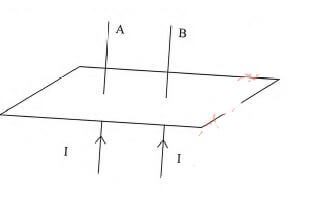
Figure 3
On the diagram, sketch the magnetic field lines around the wires to show how the fields interact.(2 marks)
SECTION B (55 marks)
Answer all the questions in this section in the spaces provided.
-
- Electrical energy is transmitted at very high voltages and low current
- Describe how the high voltages are attained. (1 mark)
- State two reasons why thick aluminium wires are preferred to copper wires for transmission over long distances.(2 marks)
- Figure 4 shows an electric cooker connected to the mains supply, X, Y and Z are the mains wires.
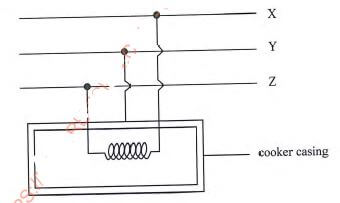
Figure 4
State with reason the name of wire Y (2 marks) - A student has some coloured bulbs rated 60 W, 240V to be connected for decorations.
- State the number of such bulbs that can be connected normally to a 240V supply through a 5A fuse.(2 marks)
- If the cost of electric energy is Ksh 3.00 per kWh, determine the cost of running the bulbs in (c) (i) for 5 hours daily for 20 days.(3 marks)
- Electrical energy is transmitted at very high voltages and low current
-
- State the meaning of the following terms:
- Photoelectric effect(1 mark)
- Threshold frequency(1 mark)
- Figure 5 shows some light incident on the cathode of a photocell. The photocell is connected in series with a bettery, a variable resistor and a microammeter.
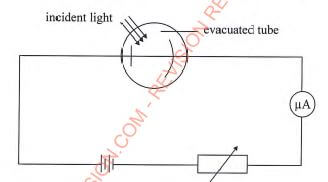
Figure 5- Explain how the microammeter reading is affected when the intensity of the incident light is increased.(2 marks)
- State the reason why the tube is evacuated.(1 mark)
- Figure 6 shows a graph of maximum kinetic energy (KE) of photoelectrons against the frequency of the incident radiation.
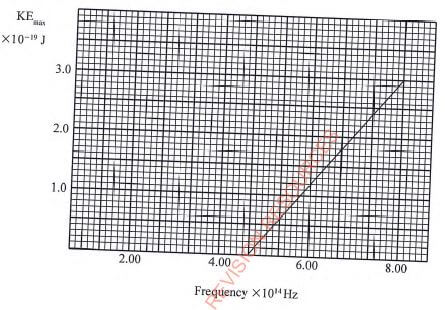
Figure 6
From the graph, determine:- Plank's constant h,(3 marks)
- the threshold wavelength , given that the speed of light C is 3.0 x 108ms-1 (3 marks)
- State the meaning of the following terms:
-
- Water waves from a certain source move from the shallow end to the deep end. State the change that occurs at the deep end on the following:
- Frequency(1 mark)
- Wavelength(1 mark)
- Velocity(1 mark)
-
- Abiconvex lens forms an upright image twice the size of the object. If the focal length of the lens is 20 cm, determine the object distance.(4 marks)
- State two optical instruments which produce a magnified real image using a convex lens.(2 marks)
- State one difference between the working of the human eye and the lens of a camera.(1 mark)
- A lens of focal length 20 cm forms a virtual image when an object is placed 60cm from the lens. State with a reason the type of lens used.(2 marks)
- Water waves from a certain source move from the shallow end to the deep end. State the change that occurs at the deep end on the following:
-
-
- Draw a circuit diagram showing the depletion layer of a p-njunction diode connected in the reverse bias mode.(2 marks)
- State the reason why increasing the external voltage in (i) makes the depletion layer wider(1 mark)
- State the meaning of breakdown voltage of a junction diode.(1 mark)
- State one application of diodes.(1 mark)
- Figure 7 shows the output on a screen of a CRO when an a.c. signal is connected to the y-plates with the time base on.
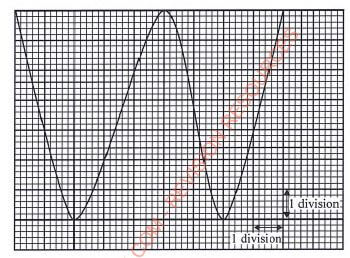
Figure 7- Given that the time control is 5ms per division and the y-gain is 100 V per division, determine the:
- frequency of the a.c. signal(2 marks)
- peak voltage of the input signal(3 marks)
- State the adjustment that may be made in order to halve the frequency of the a.c. signal.(1 mark)
- Given that the time control is 5ms per division and the y-gain is 100 V per division, determine the:
-
-
- Figure 8 shows two waves of nearly equal frequency produced simultaneously.

Figure 8
On the space provided, sketch the resultant of the two waves (beats).(2 marks) - Figure 9(a) and 9(b) show barriers placed in the path of plane waves.
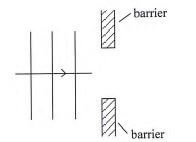
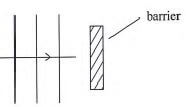
Figure 9(a) Figure 9(b)
On each figure, sketch the pattern of waves after they pass the barrier.(2 marks) - Figure 10 shows a displacement distance graph for a certain wave motion. displacement (cm)
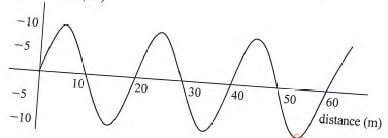
Figure 10- Indicate on the figure with letters A and B any two points that are in phase.(1 mark)
- Determine the:
- amplitude of the wave(1 mark)
- wavelength of the wave(1 mark)
- Given that the frequency of the waves is 50 Hz, determine the
- period(1 mark)
- speed of the wave(3 marks)
- Figure 8 shows two waves of nearly equal frequency produced simultaneously.
MARKING SCHEME
- Sounds produced in the studio are reflected by the walls producing echoes in the room; that interfere with the signals transmitted. The woolen materials will absorb the sound hence reduce the echo effects.
- - Hard x-rays have a higher frequency than soft x-ray.
- Hard X-rays have more penetrating power than soft X-rays.
(only one) - End B is a south pole.
- The image is blurred.
- Sin i = η
Sinr
Sin30 = 1.36
Sinx
Sin30 = Sin x
1.36
x = 21.6° - I = P
V
= 1800
240
= 7.5A
Fuse rating of 8A is suitable. -
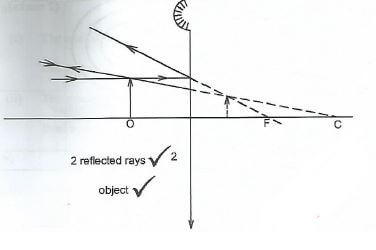
- Spontaneous disintegration of atomic nuclei by emission of radiations.
-

Ip = 2.25A - The leaf collapses
- Negative charge is induced on the tip of the pin. Pin repels negatively charged air ions which discharges the electroscope - Gamma, ultraviolet, purple light, infrared.
- It acts as a depolarizer.
- A battery is a group of cells connected in series or parallel.
-

field around each wire attraction. -
-
- By use of step-up transformers low input voltages are stepped up to high voltages for transmission
- They are cheaper
They are lighter./ lower density / lower weight
- Y is the earth wire, it is connected to the casing of the cooker.
-
- i = P = 60 = 0.25A
v 240
No. of bulbs = 5 = 20
0.25 - Cost = Power x time x rate
=60 x 20 x 5 x 20 x 3
1000
=ksh. 360.00
- i = P = 60 = 0.25A
-
-
-
- The emission of electrons from a metal surface when light/ electromagnetic radiations shine on it.
- The minimum frequency of radiation required to cject electrons from a metal surface.
-
- Increased intensity increases the number of electrons emitted hence a higher current reading on the microammeter.
- To minimize collisions between electrons and air molecules which would cause loss of energy.
- ll
- h = slope
- T. = c
f.
= 3 x 102
4.6x1014
=6.52 x 10-7m
- h = slope
-
-
-
- No change in frequency
- Wavelength increases
- Velocity increases
-
- Image is virtual hence magnification = -2
- - a film projector
- A compound microscope
- Image is virtual hence magnification = -2
- In a camera focusing is done by changing the distance between the lens and the film.
While in the eye focusing is done by changing the curvature of the lens. - - Diverging lens
Forms a virtual image when the object distance is greater than the focal length.
-
-
-
-
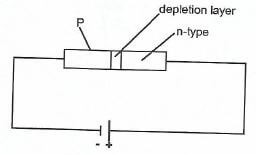
- The holes and the electrons in their respective regions are attracted away from the junction by the external voltage.
- The voltage at which the diode begins to conduct in the reverse bias mode.
- - In rectification circuits for changing a.c. to d.c.
- In control of voltages of Zener diode.
(Any one correct)
-
-
-

-
 = 350V
= 350V - Double the time control to 10ms per division.
Adjust the frequency of the source to half the value
-
-
-
-
-
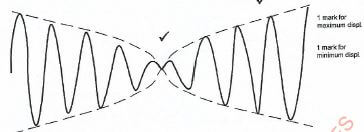
1 mark for maximum diasplacement
1 mark for minimum diasplacement
-
-
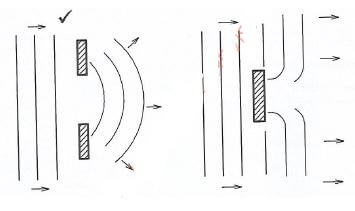
-
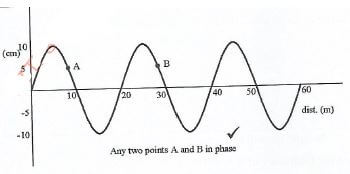
any two points A and B in phase-
- Amplitude = 10cm
- Wavelength = 20m
-
-
Join our whatsapp group for latest updates
Tap Here to Download for 50/-
Get on WhatsApp for 50/-
Download KCSE 2018 Physics Paper 2 with Marking Scheme.
Tap Here to Download for 50/-
Get on WhatsApp for 50/-
Why download?
- ✔ To read offline at any time.
- ✔ To Print at your convenience
- ✔ Share Easily with Friends / Students

